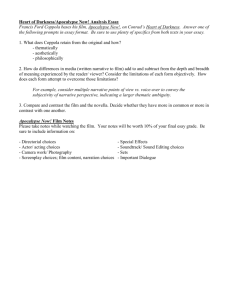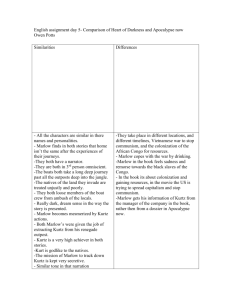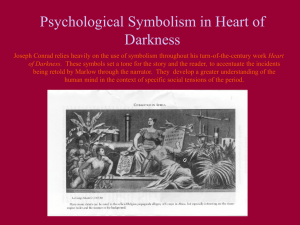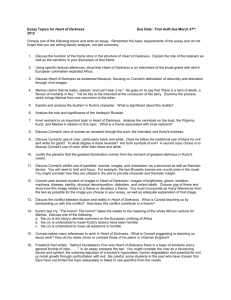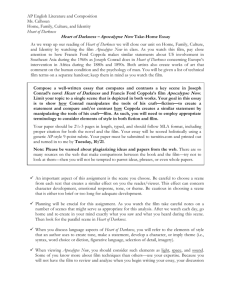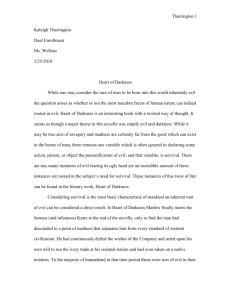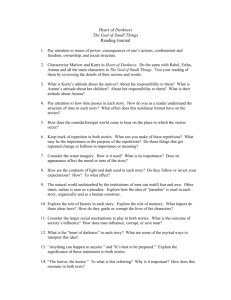Heart of Darkness:Apocalypse Now Essay
advertisement
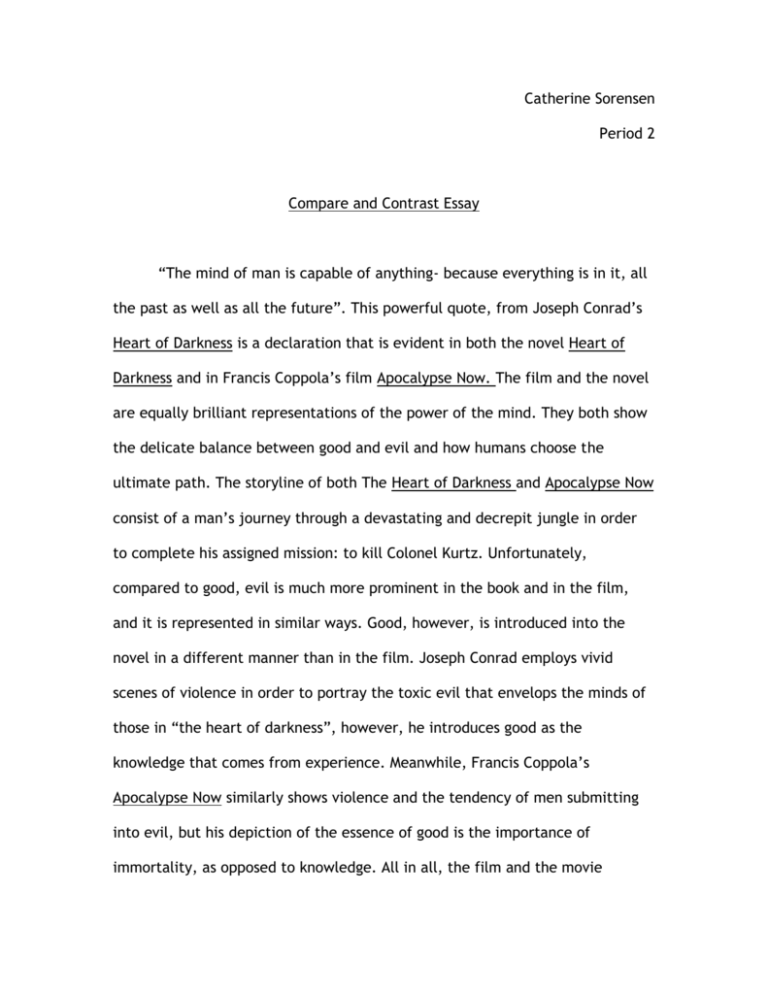
Catherine Sorensen Period 2 Compare and Contrast Essay “The mind of man is capable of anything- because everything is in it, all the past as well as all the future”. This powerful quote, from Joseph Conrad’s Heart of Darkness is a declaration that is evident in both the novel Heart of Darkness and in Francis Coppola’s film Apocalypse Now. The film and the novel are equally brilliant representations of the power of the mind. They both show the delicate balance between good and evil and how humans choose the ultimate path. The storyline of both The Heart of Darkness and Apocalypse Now consist of a man’s journey through a devastating and decrepit jungle in order to complete his assigned mission: to kill Colonel Kurtz. Unfortunately, compared to good, evil is much more prominent in the book and in the film, and it is represented in similar ways. Good, however, is introduced into the novel in a different manner than in the film. Joseph Conrad employs vivid scenes of violence in order to portray the toxic evil that envelops the minds of those in “the heart of darkness”, however, he introduces good as the knowledge that comes from experience. Meanwhile, Francis Coppola’s Apocalypse Now similarly shows violence and the tendency of men submitting into evil, but his depiction of the essence of good is the importance of immortality, as opposed to knowledge. All in all, the film and the movie equally introduce readers into a dark, evil and savage world while offering their own unique “window of light,” for redemption. Throughout Heart of Darkness and Apocalypse Now it is evident the man himself created a situation where evil far outweighed good. Death, destruction and murder are constantly present. Near the beginning of Marlow’s journey into the Congo (the mirror image of captain Willard’s journey into Cambodia, in Apocalypse Now) Marlow witnessed a French man-of-war irrationally shelling into the jungle. The French ship, or rather the people within the man-of-war, had absolutely no consideration for the life they were destroying. Marlow’s observation of the scene is similar to Captain Willard’s experience with Lieutenant Kilgore. In Apocalypse Now, a man named Kilgore assigned an order to “bomb them (a Vietnamese village) back into the stone age” and all for the selfish desire to surf in their beach. Both events equally represent the wreckless slaughter of human life that made the events and its participants, so savage. Moreover, both the novel and the film vividly depict a man submitting into evil, a man named Kurtz. Kurtz was an amazingly talented and revered humanitarian who gave into evil after living in surroundings that epitomized hell. Everyman has his breaking point and in the Heart of Darkness and in Apocalypse Now, Kurtz gave into his. Humans have the choice to work for good or succumb to evil, and in both the film and in the novel, evil’s prominent presence lures most men into the “dark”. There are no true heroes in Heart of Darkness or Apocalypse Now. Good is not present as a fairy godmother, nor as a strong savior with all the solutions. Rather, in Apocalypse Now and in the Heart of Darkness Good is seen in a different light. The good in Apocalypse Now is introduced as the legend that creates immortality. The only redemption for the feverish and debilitated Kurtz is the idea that his accomplishments and his abilities will be remembered by his son and by society. Meanwhile, the divine light in the Heart of Darkness is knowledge. Marlow went into the pit of gloom and misery, he witnessed the most gruesome things possible, and amid all the chaos Marlow gained knowledge and an awareness of life through his experience. His “yellow glow,” and his Buddha-like appearance are the culmination of what he learned throughout his journey into the “heart of darkness”. In summation, Conrad’s Heart of Darkness and Coppola’s Apocalypse Now are vivid, violent tales that depict the extreme limits of the minds capabilities. With the lack of restraint, order and compassion, people can do immoral and unspeakable deeds. However, the evil can be thwarted with knowledge, order and law. The “light” can be achieved if the human mind works for it. Both works of art depict the fragile balance between good and evil, however, they do so in their own unique way.
